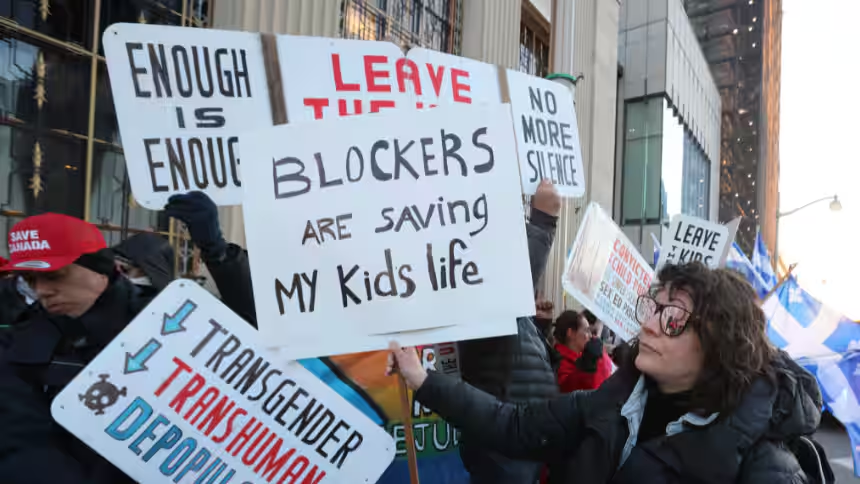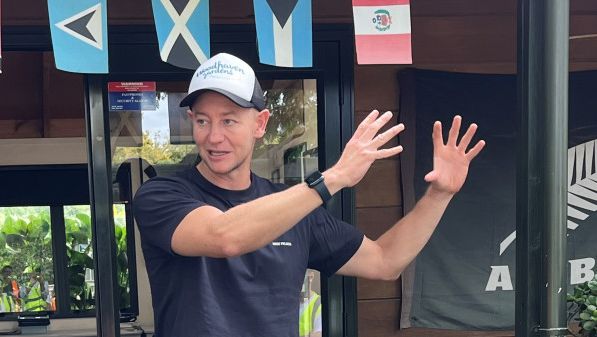Health NZ/Te Whatu Ora was among the agencies implicated. Its alleged sloppiness in regard to conflict of interest and safeguarding is no surprise to those of us who have watched with alarm the agency’s stance on puberty blockers. For many years Health NZ/Te Whatu Ora’s website content on puberty blockers has not prioritised accurate and clear information. Rather it has followed guidance from those with an ideological commitment to a particular treatment pathway. A Ministry of Health evidence brief on puberty blockers, released in November, should have ended all the dubious references and dodgy information which were definitively superseded by the findings of the brief. Not so. It’s quite a story.
New Zealand’s big puberty blocker moment
Last November, after months of delays, perhaps desperately searching for the alleged evidence it has based its policies on, the Ministry of Health finally released its Evidence Brief² on the use of puberty blockers as a treatment for young people with gender dysphoria. The conclusion: there is no good evidence that supports the use of puberty blockers for gender dysphoric or trans-identified young people. There is no good evidence of blockers doing good and no good evidence that they are safe or reversible. There is some known harm from them and a lot of unknowns.
This is huge news. For years, official public health information, issued by the Ministry and later Health New Zealand / Te Whatu Ora³, said puberty blockers were safe and reversible. Wave after wave of media stories have talked about puberty blockers as life-saving, urgent and described them as essential healthcare. Lobby groups that promote open access to puberty blockers as a human right have been contracted by the government to go into schools, provide school resources, train workers, and specifically to train the health workforce. Bureaucrats have absorbed and amplified these highly partisan voices, casually putting to one side the requirement for public servants to be impartial and trustworthy.
The grand moment: what Health NZ/Te Whatu Ora could have done
With the evidence of the lack of evidence before them, this was the moment to turn the ship around. Health NZ/Te Whatu Ora has responsibility for providing health information to the public. It was the moment for the agency to be crystal clear and upfront. Young people’s health depends on it. There was a marvellous opportunity afoot: give New Zealanders up-to-date, balanced and accurate information about a controversial health topic. Health NZ/Te Whatu Ora had all the information they needed to step up, counter years of misleading information, and reset a widespread public misperception that it had helped create.
However, on the puberty blocker section of the Transgender and gender diverse tamariki and rangatahi page on Health NZ/Te Whatu Ora’s website, there’s little that has changed. There’s no Hold up, we were wrong. There’s no OMG, we fucked up so badly statement translated into plain and polite language. There’s no We told you we knew it was safe and reversible and we were (at best) badly misinformed by unqualified self-appointed authorities we never should have deferred to statement. There’s no We’re sorry. There’s no Watch out, we know nothing about how harmful puberty blockers might be, and when you hear claims that they reduce suicide and improve mental health, this is not backed up by any science we could find. There’s no explaining that the Cass Review, a four-year independent study commissioned by the UK government, found that the whole gender-affirming healthcare approach, of which puberty blockers are a part, is built on ‘shaky foundations’.
The grand moment: what Health NZ/Te Whatu Ora did
These are the critical points that families need to know. But none of this is reflected in Health NZ/Te Whatu Ora’s public information on puberty blockers.
After the Evidence Brief was released, Health NZ/Te Whatu Ora replaced a single paragraph, the text changes are highlighted in the image below. The old paragraph (shown on the left) said blockers were reversible and still allowed for social, emotional and brain development, and that blockers allowed time to explore gender. This paragraph was removed. The new paragraph (on the right) reflects MoH’s woolly position statement. The Ministry, it says, recommends caution in blocker prescription. It says blockers should be prescribed by a health practitioner experienced in gender-affirming care (yup, that shaky unevidenced thing) and who is part of a multi-disciplinary team. It also says patients and their whānau must be made aware of the state of the evidence.
Nowhere, on the page does Health NZ/Te Whatu Ora mention what that state of the evidence is —that there is none. There’s not even a direct link from the puberty section to the Evidence Brief on puberty blockers (there’s only a link to the now-expired consultation).

Let’s look at them in detail.
How Health NZ/Te Whatu Ora’s “useful resources” all contradict the findings of the Evidence Brief
-
The first link is to InsideOUT which spearheaded a campaign to discredit the Cass Review, that four-year review on the efficacy of puberty blockers, run by renowned paediatrician Hilary Cass and including four systematic reviews by the University of York. “Time to take out the trash” ran the headline of their social media campaign claiming that evidence and safeguards as discussed by Hilary Cass were discriminatory, biased and an undermining of human rights. All are claims imported from overseas lobby groups.
-
More recently, InsideOUT front-footed a campaign to get people to submit to that Ministry of Health consultation on puberty blocker safeguards. It provided point-by-point guidance that denied the findings of the evidence brief. It repeatedly uses the phrase “irreversible unwanted physical changes from puberty” and claims that not giving puberty blockers to trans-identified kids was discriminatory because they were given to kids with the unrelated condition of precocious puberty. A weird take, like saying it would be discriminatory to only give insulin to diabetics who needed it. InsideOUT’s material includes quotes from numerous young people saying puberty blockers saved their lives.
-
The family info sheet (download from the page) lists 21 organisations and resources, all of which promote puberty blockers as positive. For example, the first link is Be there. Be there’s content on puberty blockers is from Project Village which disses the Cass Review, claims puberty blockers are reversible, says normal puberty can be harmful, and says puberty blocker side effects are very rare.
-
Another link is to Gender Minorities Aotearoa, a lobby group that on their posters regarding the puberty blocker consultation claims to be the national public health organisation for transgender health. GMA says “Puberty blockers are safe and fully reversible and do not affect long-term fertility.”
Gender diversity in children and young people — KidsHealth
-
The KidsHealth page is another gateway to a collection of Puberty-Blockers-Or-Death lobbyists and lobby materials. KidsHealth statement on puberty blockers is that “Puberty blockers are a medicine that can pause the physical changes of puberty. They are generally considered to be a safe and reversible medicine”.
Diligent, worried family members, desperate to help their kids will delve into these officially endorsed “useful resources” and be slammed with colourful, dramatic pseudo-scientific lies that assure them that puberty blockers are safe and reversible. They will hear that puberty blockers are life-saving and reduce distress. They will be told that anyone who opposes them is discriminatory and bigoted, and that attempts to put in safeguards are driven by hostility. These vulnerable families are facilitated to this information by Health NZ/Te Whatu Ora who knows by now the information is misleading.
Summary
The Ministry of Health released its Evidence Brief on puberty blockers in November 2024. Health NZ/Te Whatu Ora, the organisation tasked with providing accurate health information to New Zealanders, has not appropriately updated its information on puberty blockers. It obfuscates rather than reveals.
In its section on puberty blockers Health NZ/Te Whatu Ora:
-
does not report on the key finding of the Evidence Brief
-
does not provide a direct link to the Evidence Brief
-
does not translate the key findings into plain language
-
does not acknowledge it has previously misled the public, overstating its knowledge of the safety and reversibility of puberty blockers
-
does not overtly retract its previous position on puberty blockers
-
does not link to the Cass Report, a recent global review of puberty blocker evidence
-
promotes and recommends organisations that have actively participated in campaigns that work to suppress evidence and remove safeguards around puberty blockers and who have an ideological commitment to puberty blockers
-
promotes resources, many of which directly contradict the conclusions of the Evidence Brief, and none of which support Cass or the Evidence Brief.
References
1 For more information see Integrity Briefing: Manurewa Marae and the Integrity crisis at the heart of NZ democracy by Bryce Edwards.
2 The single most precise statement about the findings of the Evidence Brief appears in the conclusion of the Executive Summary (p3). “Evidence about the impact of GnRHa on clinical and mental health and wellbeing outcomes is scarce, with available evidence largely of poor quality.”
3 Longstanding ministry, the Ministry of Health (MoH) sets health system direction and policy for as well as having regulatory, monitoring and advice functions. Since 2022 Health New Zealand also known as Te Whatu Ora has worked on the provision of healthcare. I haven’t found good explanations online but I think it could be considered that MoH is strategic and Health NZ/Te Whatu Ora is operational. Shortly after the creation of Health NZ/Te Whatu Ora, official health information intended for the public was moved from the MoH website to the Health NZ/Te Whatu Ora’s website. The Evidence Brief was published by MoH, who also issued a position statement and called for public submissions on whether further safeguards on puberty blockers were required. Submissions closed on 20 January 2025.
This story was first published on the Bassett, Hide, Brash website and sourced from The Ministry has fallen/substack(Image credit: Patrick Doyle/The Canadian Press)







